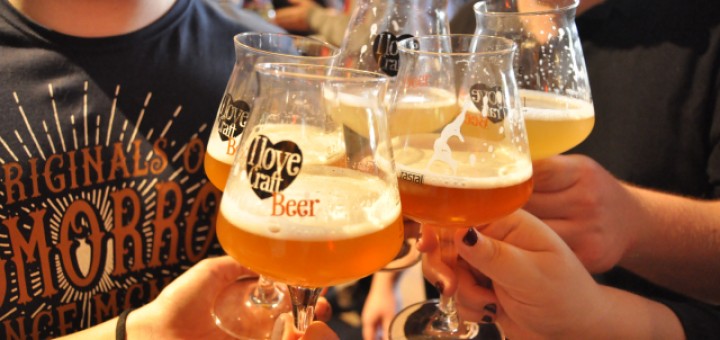What is ‘craft’ beer?

A new beer culture is currently emerging around the world. In virtually all corners of the globe, young brewers are developing special recipes or seeking new inspiration from traditional brewing techniques. They have taken it upon themselves to fight the “samey” beers produced by large brewers. Their magic words are “bravery,” “character,” and “creativity.” This is no different in Germany, with the country experiencing the same kind of “brewing” dynamism for the past three years or so–a trend that has seen new pubs, cafés, and “scene bars” spring up. Top restaurants have also introduced beer menus recently, and rarely a week goes by now without a trendy beer event taking place. Bear in mind, though, that craft beers are designed to be savored and not guzzled by binge drinkers!
Describing the beers in five key terms:
1. Hand-made:
Almost 90 percent of German beers are manufactured industrially, which has led to the same boring old flavor. Craft beer is produced in smaller quantities and in most cases as part of a manual process. The aim is for the beer to have its own individual taste. The beer is created as part of a process that sees raw ingredients go in first, before bottles are filled and labels affixed by hand.
2. Creativity:
Craft beer would not be what it is without the experimentation that is carried out enthusiastically by (mostly) young brewers, who pursue the goal of authentic, individual, and innovative creations. Craft beer producers pour “blood, sweat and tears” into their kettles as well as plenty of love. With different combinations of aromatic hops, special types of malt, and yeast cultures (some of which are grown especially) as their raw ingredients, they conjure up tasty beers with flavors as unusual as chocolate, biscuit, or fruit bombe. They even manage to observe the German purity law in the majority of cases.
3. Hops:
Hops play an important part in the variety of aromas produced and are the heart and soul of many craft beers. They are no longer boiled for the acerbity of the beer, but rather the special sorts of aromas should ensure a nice scent and taste. Furthermore, craft brewers throw much more of this “green gold” into the brewing kettle than the conventional supermarket brands do. Doing so creates a much stronger bitter as well as giving it scents and exotic tastes such as passionfruit, grapefruit, lychee, or pineapple. The range of aromas produced is vast. More than 200 varieties of hop are grown worldwide, with one of the largest producing areas being the Hallertau in Bavaria.
4. Types of beer:
Of the roughly 5,000 types of beer that exist, a number stand out in particular. Certain long-forgotten types of beer are now being rediscovered, including Imperial Stout, a dark, malty beer which is often more than ten percent alcohol and was loved back in the day by the Russian tsars, and old Belgian-style “Saison,” which used to be brewed in the winter months, stored in a cool place, and then drunk in the summer by agricultural workers–each one due five liters per day. India Pale Ale (IPA) is probably the most significant of the craft beers though. This beer has its origins in the strongly hopped beer drunk in the Indian crown colonies of the 19th Century. Brewers had to add more hops to the beer and increase its alcohol content to ensure it would last the long journey by sea from Britain to India.
5. Price:
A single bottle of craft beer can sometimes cost more than a whole box of beers from the supermarket. Craft beer is more expensive simply because it uses select premium ingredients, is made by hand, and requires special storage for months. Some types are even stored in old whiskey or cognac barrels! Any consumer drinking a craft beer should be aware that they have an artisanal product in their glass, not something designed for binge drinking. It pays to be cautious though: Beers costing more than EUR 10 may not necessarily be value for money.
